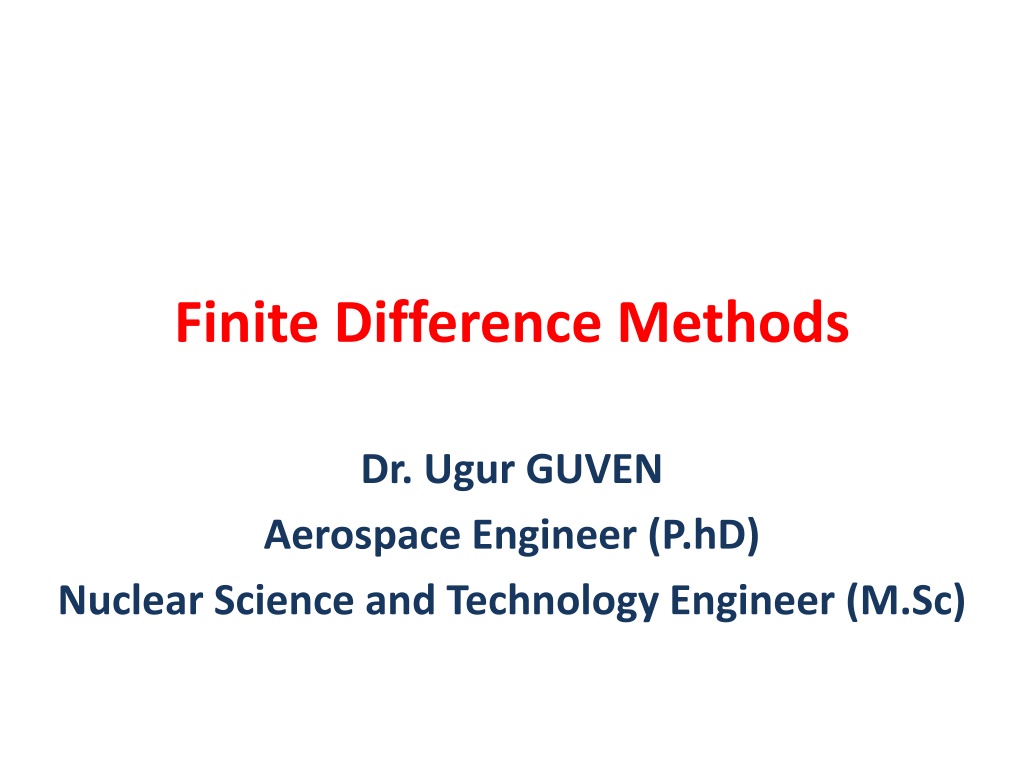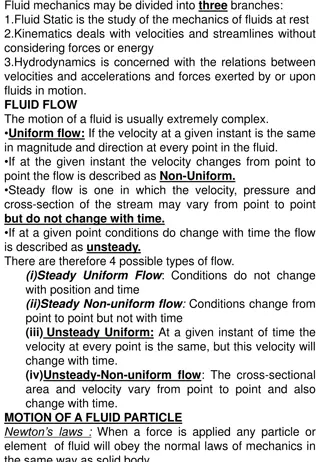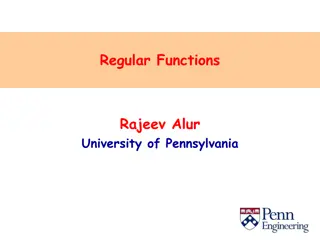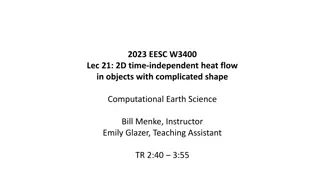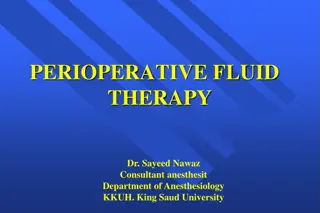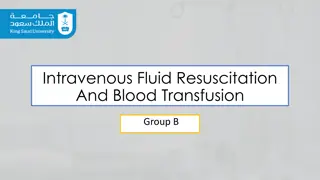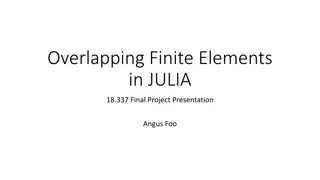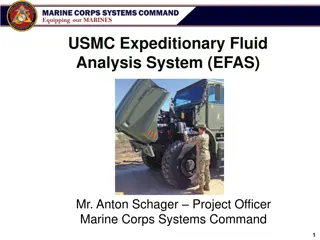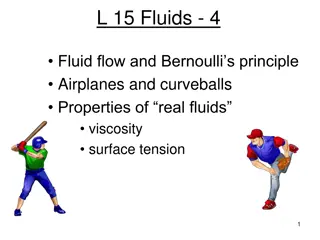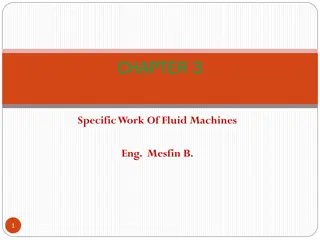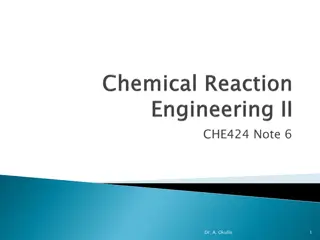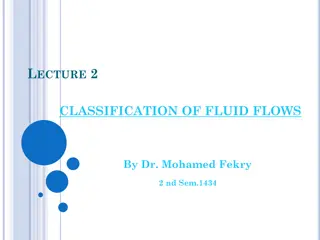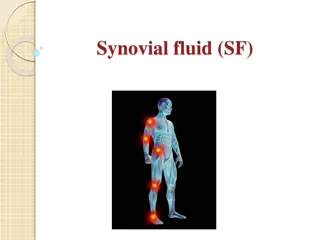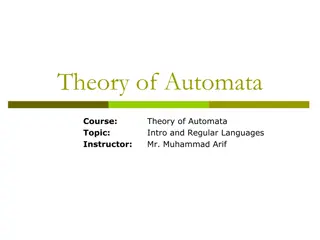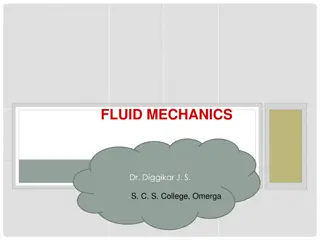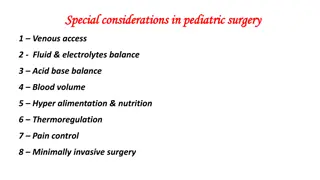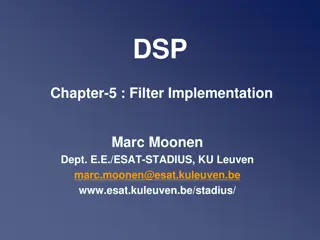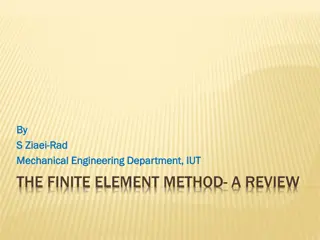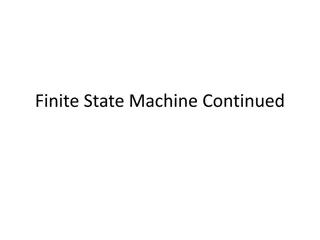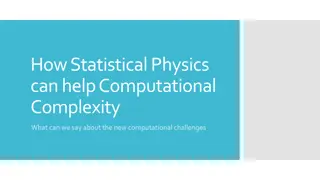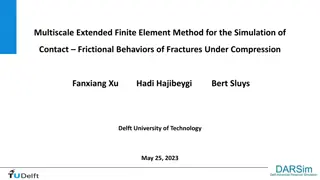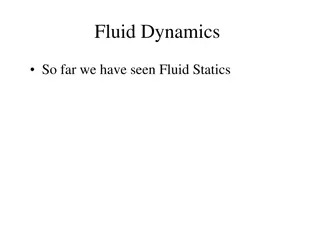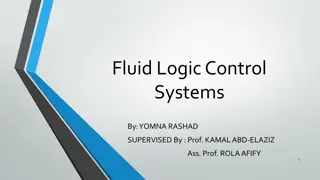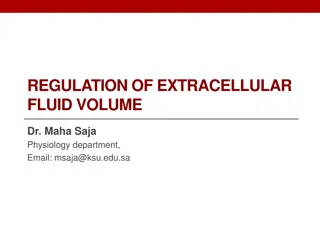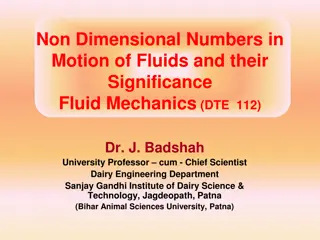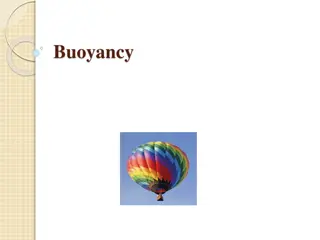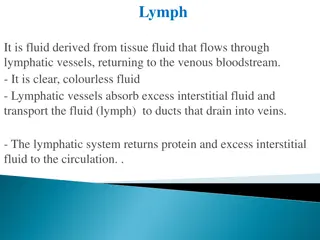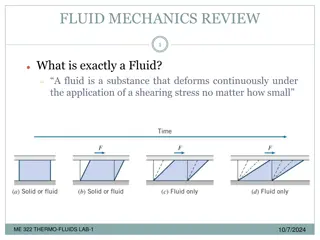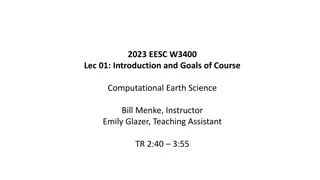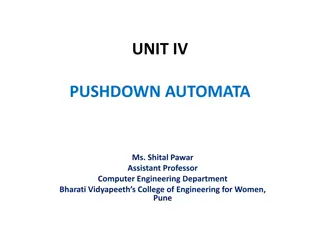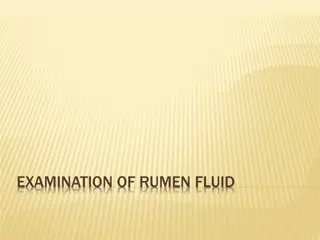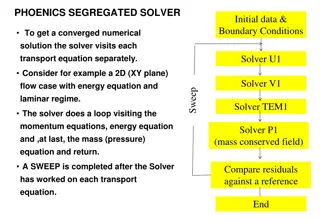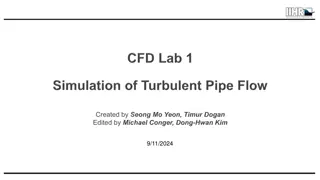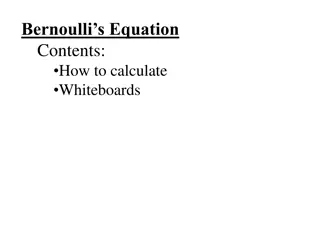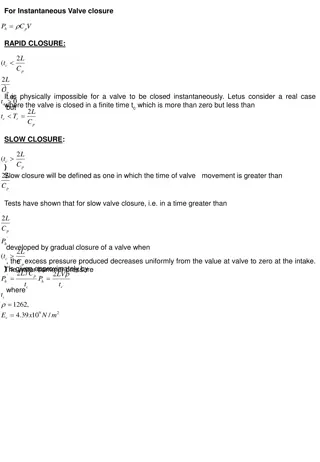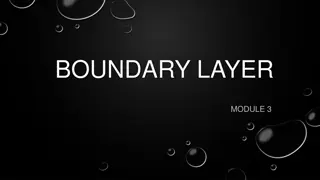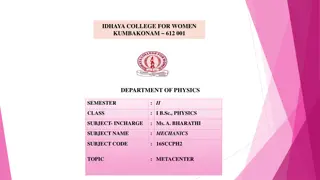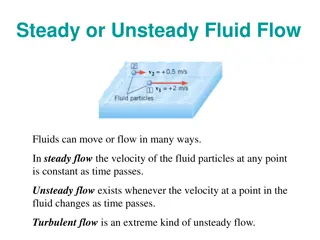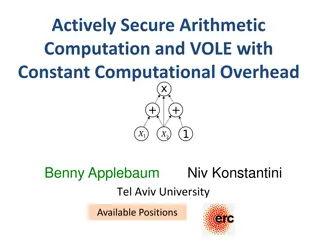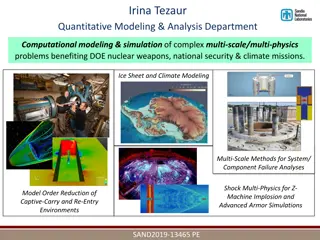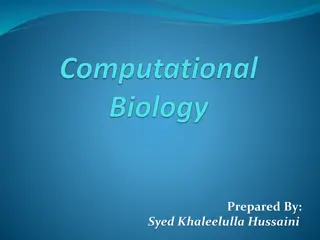Overview of Finite Difference Methods in Computational Fluid Dynamics
Discretization of equations is crucial in CFD, and Finite Difference Methods play a key role. Utilizing Taylor series, forward differences, rearward differences, and central differences, these methods transform partial differential equations into solvable algebraic forms. Understanding these techniques is essential in approximating partial derivatives accurately for various fluid dynamics problems.
- Computational Fluid Dynamics
- Finite Difference Methods
- Discretization
- Taylor Series
- Numerical Methods
Download Presentation

Please find below an Image/Link to download the presentation.
The content on the website is provided AS IS for your information and personal use only. It may not be sold, licensed, or shared on other websites without obtaining consent from the author. Download presentation by click this link. If you encounter any issues during the download, it is possible that the publisher has removed the file from their server.
E N D
Presentation Transcript
Finite Difference Methods Dr. Ugur GUVEN Aerospace Engineer (P.hD) Nuclear Science and Technology Engineer (M.Sc)
Discretization of Equations The first step in solving any CFD problem is to discretize the equations. Usually all fluid dynamics equations are in a partial differential equation format These differential equations must be transformed into algebraic form, so that they can become solvable by the computer The most common Discretization technique for Partial Differential Equations is the Finite Difference Methods
Taylor Series The primary background of any discretization using Finite Differences depends on using the Taylor series. In the Taylor series, you can approximate a solution to any function at (x +dx) as long as you know the initial value
Forward Differences Lets write the X component of velocity at Point (i,j) for a 2d flow. Lets solve for the first term derivative of the above equation
Forward Differences Hence after the first term, the remaining terms can be classified as truncation error and can be discarded (if you accept the magnitude of the error) Then, we get a first order algebraic equation that approximates the partial derivative and it is called a forward difference
Rearward Differences Lets now write the Taylor series for the point u(i-1,j) in a 2d flow
Rearward Differences Thus, if we solve the above equations to get a partial derivative of u to x, then we will have a first order accurate algebraic form of the partial derivative in the rearward difference form.
Central Differences However, the problem with both the rearward differences as well as the forward differences is the fact that they are first order algebraic representations of a partial derivative. Hence, the accuracy is greatly decreased due to this and we will need to look for ways to increase the accuracy of the partial derivative to reduce the overall error that will be formed in the equations
Central Differences Lets subtract the following equations to try to increase the order of accuracy
Central Differences Hence, solving the equation would cause the following equation to be formed: Hence, the following is a second order accurate central difference representation:
Central Differences Hence, the following equation is a more accurate representation of a partial derivative of u over x and thus it has less errors. Moreover, it takes data from both sides of the grid over point (I,j)
Differences with Respect to Y Using the methodology defined above, it will be possible to create forward, rearward or central differences with respect to y in partial differentiation
Partial Derivatives Using Finite Differences
Writing Partial Derivatives in Algebra Hence, using the methods of finite differences, you can easily transform first degree partial derivatives so that you can create an algebraic equation. For example, transform the following partial differential equation using finite differences u u = 0 x y
Second Order Partial Derivatives To find the second order partial derivatives with respect to x, lets add the Taylor series expansion for u(i+1,j) and u(i-1,j)
Second Order Partial Derivatives Summation of the above equations gives: As a result, the second order partial derivative is written in central differences as:
Second Order Partial Derivatives Hence, the second order partial derivatives written in the central difference notation would be:
Mixed Partial Derivatives By writing a mixed partial derivative , we will be able to write second order equations as well.
Transformation of Partial Differential Equations Transform the following partial differential equation into an algebraic equation by using Finite Differences 2 2 2 u u u u u + + + + = 0 2 2 y x y y xy
Engineering Example 1 Calculate the shear stress and the heat transfer at the wall with the following data by using finite differences
Example 1 The shear stress and the heat transfer at the wall is given by the following equations in first dimensional problems.
Example 1 First Order Difference Solution, solve for the other points
Time Marching Solution In the solution of fluid dynamics equations, it is usually customary to solve flows changing over time. At each t step of the flow, the flow properties will change accordingly. This is called Time Marching Solution.
Example of Time Marching Solution Lets assume the unsteady, one dimensional heat conduction equation with constant thermal diffusivity
Example of Time Marching Solution Now, we are going to write the equation only for T, since we are interested in finding the temperature at different time points for x distance. Hence, the solution for Temperature is solved by Time Marching Solution
Time Marching Solution Time marching means that T at all grid points at time level n+1 are calculated from known values at time level n. Then n+2 is calculated pretty much the same way as n+1 levels are used for calculation.
Explicit and Implicit Approach If a difference equation contains only one unknown and all other variables are know, then that is called an explicit solution. If more then one unknown variable exists, then you will need to solve a set of algebraic equations simultaneously. Hence, this is called the implicit approach.
THANK YOU Please download this lecture as well as other lectures and numerical examples from my website: www.cfdlectures.co.cc Dr. Ugur GUVEN drguven@live.com
